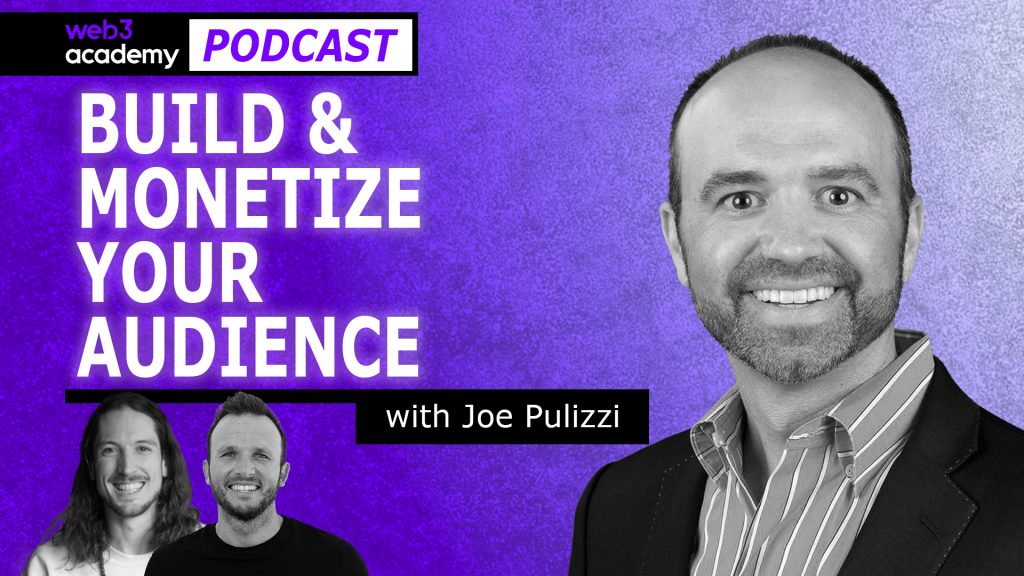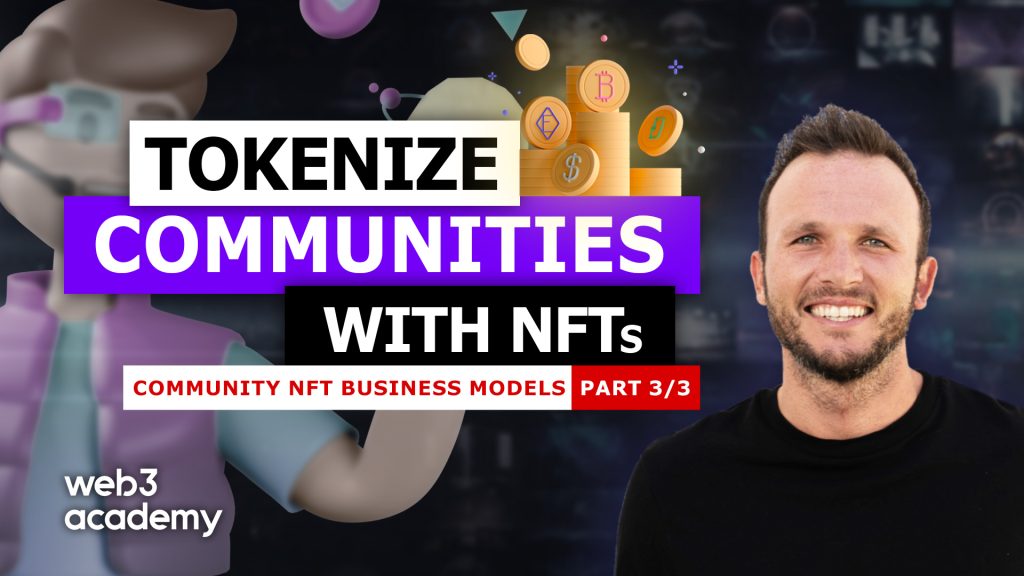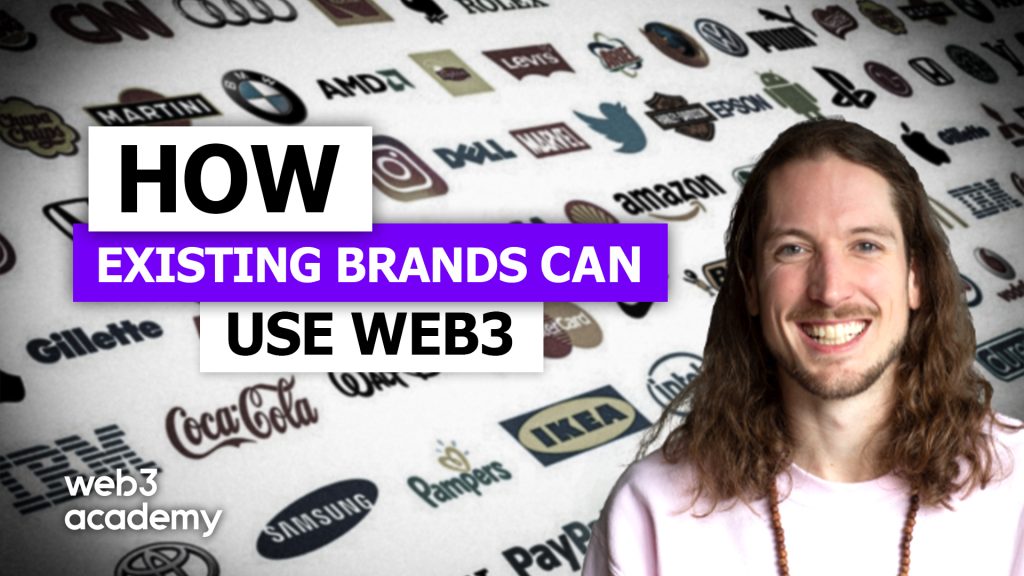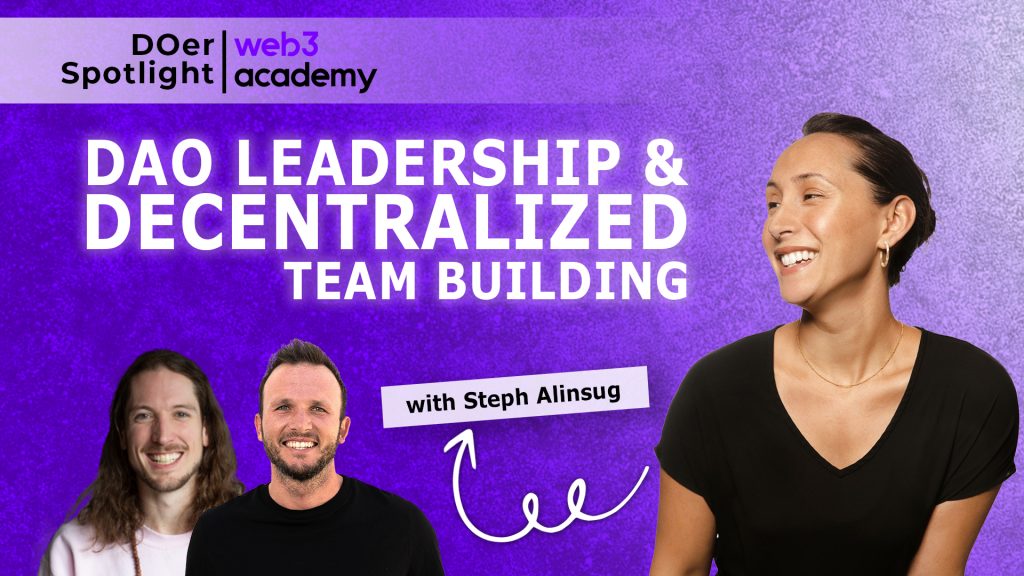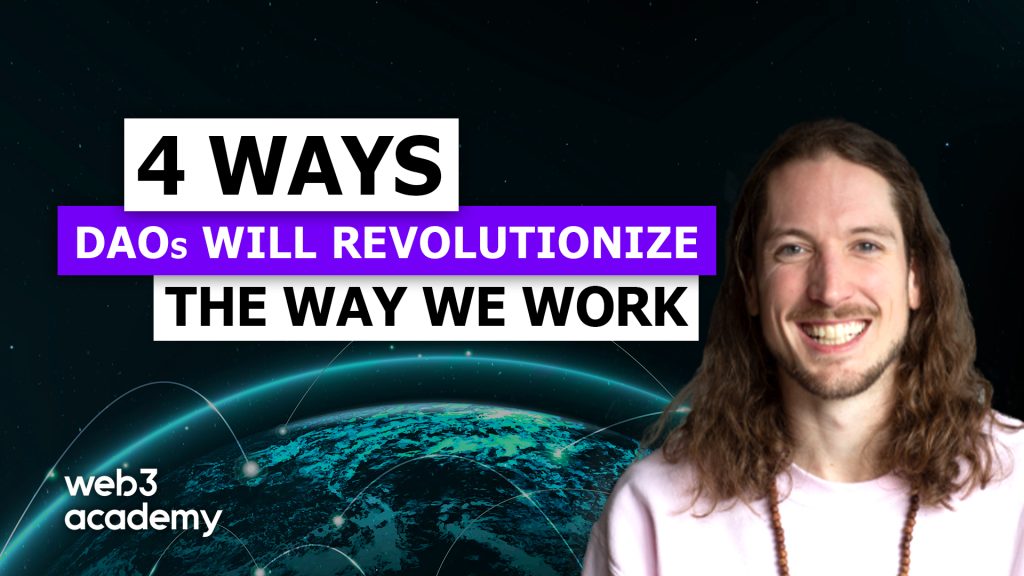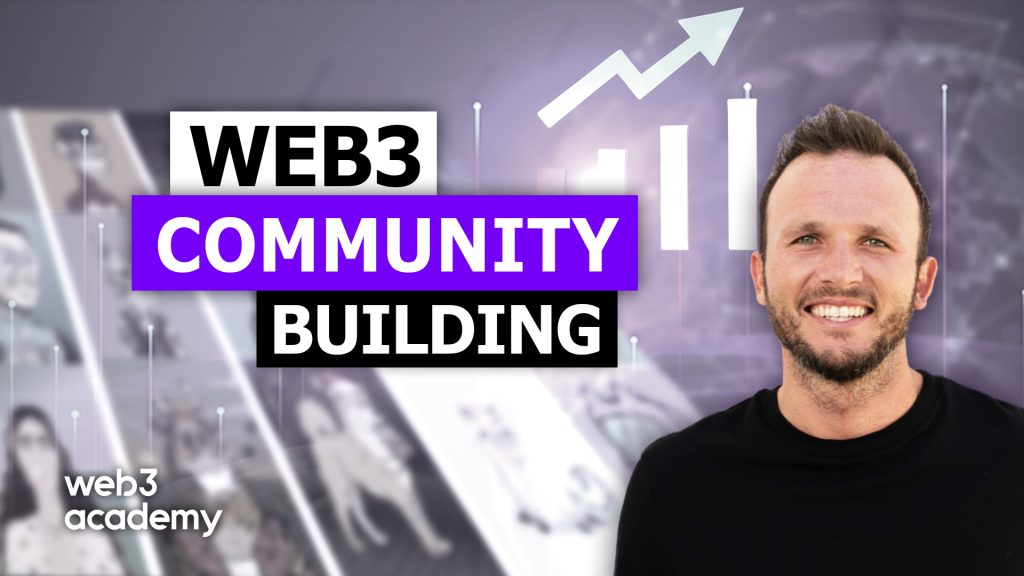
Why Community Is The Secret to Web3 Success
Community Is the Last Competitive Advantage in a World of Open-source Technology
No time to read? Get the low down through your favorite podcast platform 👇
GM web3 explorers!
You’ve no doubt heard people championing that “community is everything.”
While I definitely agree, I think that we need to understand the why before we can consciously build our communities. Otherwise, it just becomes something we say but never realize the benefits of. 👎
Community-first thinking isn’t unique to web3 either. Top companies, such as Apple, Tesla, and Berkshire Hathaway all have their evangelists who’d rather die than support a competitor—even if it made logical sense to choose another option.
Yes, I’m looking at you Apple fans. 🤳
In all seriousness, though, community-first thinking will become the norm, and venture capital firm Bessemer agrees. They predict that, in the next few years, more than half of startups will have community-focused employees before they cross $5 million in revenue.
In this Deep Dive, I’ll be covering what’s wrong with the current community dynamic and all the ways an engaged community benefits your organization—for example:
- Solidifying your competitive advantage 💪
- Lowering marketing costs 📉
- Creating sustainable product demand 😁
Let’s dive in.
Tired of Elon’s memes? Then check out Lenster, the evolution of social networking 👀
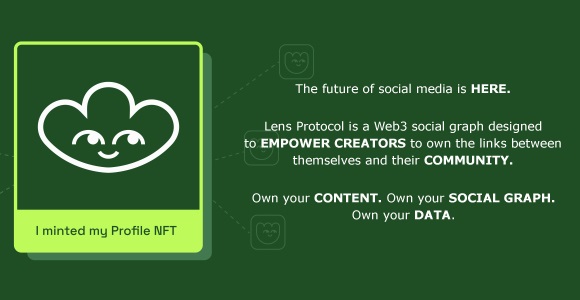
What’s Wrong With the Current “Community” Dynamic
When most people think of communities, they’re actually thinking about audiences.
Audiences dominate web2 and are still noticeable in web3. And no, just because a web3 organization has a Discord server doesn’t mean that they have a community.
You can think of an audience as a “one-to-many” relationship. This means a creator or business is the sole contributor while audience members are consumers.
For example, many audience-focused products revolve around paid subscriptions, such as premium newsletters, private communities, etc. However, the value proposition of these products is often about access to the creator.
Private communities are a step in the right direction, but most of them don’t leverage the real power of a community. These groups often host weekly calls and have moderators to spur conversation, but besides the few participants that ask questions, community engagement flatlines.

Instead, the right community dynamic involves:
- Members actively contributing to discussions (maybe even leading them).
- Established community members helping and interacting with new ones.
- Members who are involved in shaping products, events, experiences, and more.
A community focus is all about empowering members to share opinions and enable deeper involvement in an organization.

QUESTION
What Do You Think Is Most Valuable About Having a Community?
- Word-of-mouth marketing
- Sustainable revenue
- Direct access to feedback
- Being able to build products together
👉 Let us know by replying to this email.
Ways an Engaged Community Can Benefit Your Organization
An engaged community is one of the most powerful business tools you could ever come across.
Members can help shape your products and services, alert you to business opportunities, and act as human billboards for your organization. And in web3, your community can help you create the yet-to-be-written playbooks for success—all you have to do is listen to them.
In particular, though, I believe there are four major ways an engaged community can support your organization:
- Community becomes your new moat.
- Members help you scale by engaging with new members.
- Engaged community members are effective social sellers.
- Your community stays by you through thick and thin.
Let’s explore how these can benefit your business.
Community is Your Moat
In a world where open-source technology is becoming ubiquitous, any sort of technological advantage there once was between organizations is slowly dying.
On top of this, web3 interoperability lowers switching costs drastically since users don’t have to lose their data if they want to move to another platform. That means your competitive advantage must come from something that a competitor can’t easily copy—your community.

When you have a group of people who:
- Share a common interest in your vision.
- Enjoy interacting with your organization and other members.
- Are empowered to meaningfully shape your organization’s path.
You’re well on your way to increasing the stickiness of your community. Basically, the stickier your community is, the easier it is to retain current members, making it easier to then acquire new members through the network effect.
The battle between Apple and Samsung is the perfect example of stickiness.
Based on the specs of each company’s flagship product alone, Samsung is arguably the winner by a small margin. But to be fair, Samsung’s prices are about $100 more per device across the board.
Regardless, based on logic you’d expect sales for each company’s smartphones to be evenly matched. But in the US, Apple accounts for a whopping 48% of the market share with Samsung contributing 30%.
This is the power of community as a moat.
If a competitor offers a similar product, engaged community members won’t bat an eyelid.
Communities also appeal to consumers’ emotions, meaning they’d be more inclined to buy a product that gives them a sense of belonging or an ego boost.
Engaged Community Members Can Function as “Part-time Employees”
The level of contribution will vary depending on each member’s engagement and attachment to your organization.
However, even the smallest of member contributions can give your actual employees more time for other tasks.
Community members can help across all facets of your organization, including product development, marketing, customer service, research, etc.
For example, you can poll your community to get their feedback on product design, features, price points, and more. Some community members may even help you build these products if they’re big fans of your vision or if you can incentivize them correctly—hence the use of bounties and tokens in web3.

A real-world example of community contributions comes from Jason Keath who was a recent guest on our Weekly Rollup.
Jason, who’s part of the JUMP DAO, was inspired by JUMP’s branding, vision, and community, leading him to work on a side project of character illustrations now called Swoopahs.
He wasn’t asked or incentivized upfront to create these characters. Instead, the project was all about adding value to the JUMP community. On top of this, halfway through the project, he asked the DAO if they wanted to get involved.
The answer? A resounding yes.
The DAO took charge, helping to better align the NFT traits and stories with the community, culminating in an ongoing mint.
While Jason doesn’t have grand plans for the collection just yet, it’s now an asset that the JUMP DAO can leverage to build its community.
And when your community members begin contributing to your organization, they automatically become more invested in its long-term success.

SOCIALS
Meme of the Week
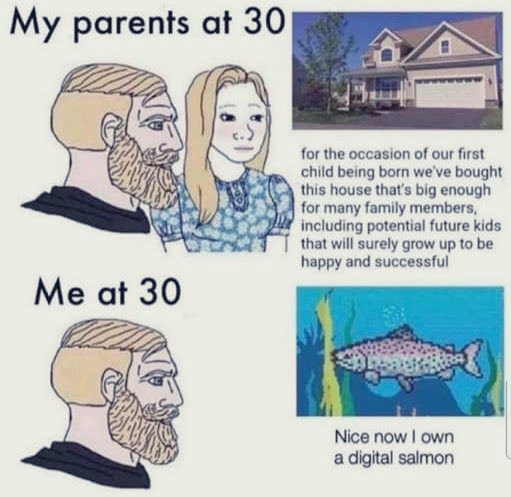
Engaged Communities Stay Through Thick and Thin
Sure, if someone contributes to your organization, they obviously want to see the long-term result of their effort.
However, helpful, welcoming communities are simply good for humanity. Everyone wants to feel like they belong somewhere, and that’s why we have so communities around the world for sports, hobbies, careers, religions, and almost anything you can think of.
People need a place where they can talk about their interests and engage with like-minded people.
So if you can provide that place for them—whether in Discord or another platform—people will happily stay around.

For example, Web3 Academy’s social shitposter and football fanatic, Raul loves Arsenal. But over the last few years, Arsenal wasn’t doing that great in the EPL (England’s football league).
So why didn’t he decide to support another club instead? It all comes down to Arsenal’s engaged community—he even went to a local meetup in his city a few weeks ago!
And like Arsenal, if you can build an engaged community, it becomes self-sustaining even if your organization is going through tough times (like many web3 companies right now).
Not only does this keep your company afloat when the tide is against you, but it also lowers retention costs since engagement isn’t purely based on monetary incentives.
Enabling Effective Social Selling
The current way of social selling is broken. It relies on salespeople and cold outreach, forcing people to pay attention.
Instead, I believe an engaged community is the true secret to effective social selling. And no, shilling random tokens on Twitter isn’t what we’re talking about here.
It’s about the power of well-thought-out community content.
Think about it. If you see a company talking about how great their product is, how do you feel? Even if their product is great, it’s easy to feel put off by the company’s claims, so businesses have to be more subtle about their promotions.
This is why influencer marketing has exploded in popularity over the last few years. But now—especially in web3—people are becoming more aware of paid influencers, preferring unpaid recommendations and content.
Outside of this, the real social selling happens in community Discord servers. When you join a company’s server, helpful community members can quickly make you feel comfortable and answer any questions regarding the company.
And just like content creation, these interactions are much more meaningful since they come from someone that doesn’t have to help other members if they don’t want to.
But no matter where your community members are promoting your organization, these actions result in lower customer acquisition costs—which is perfect considering that advertising costs are rising.
🤝 Together with Unlock Protocol: Making Web3 Memberships Easy
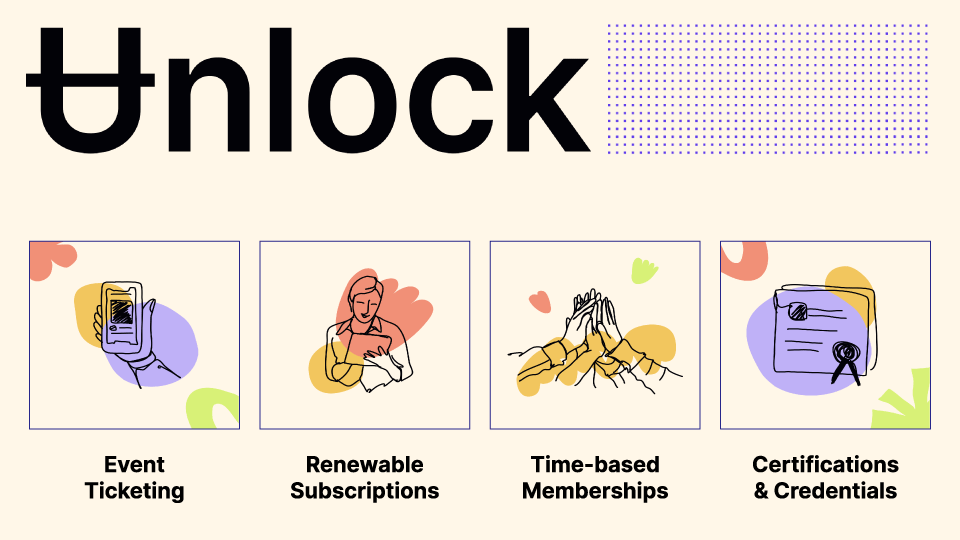
Unlock Protocol lets you create memberships and subscription NFTs in minutes!
👉 LEARN HOW 👈
Building Communities the Right Way
An open-source future is coming and the last defense against competitors is your community so it should be at the forefront of your organizational strategy.
In saying that, the community-first mentality that we’ve talked about in this Deep Dive is a relatively new focus for organizations. So we won’t try to brag and say we know everything about building sustainable, engaged communities—we don’t.
But we do know a handful of web3 experts that are pioneering and practicing this mentality in their own organizations.
That’s why we’re running an 8-week community-cultivated mastermind on How to Build and Scale Online Communities.
The goal?
To learn about community-building best practices alongside you, our Web3 Academy community.
We’ll be learning about:
- The foundations of building a healthy community
- Social media and the role it plays in engaged communities
- How to build and grow past the startup phase of your community
- How to measure community success and key metrics
- Designing your community platforms (ie. Discord) to support community building
And much, much more.
But the best part is that we’ll be taking what we learn and creating the community-building playbook together.
While the mastermind has already started, the good news is that we created some resources in Discord for you to catch up.
But if community building is your priority for 2023, don’t miss out on next week’s session!
ABOUT THE AUTHOR
Myles O’Bery
Content creator and crypto connoisseur at Web3 Academy
Find him: Twitter

FOR THE DOERS
Take Action & Level Up
LEARN
Take our FREE Web3 Rabbit Hole Course to get up-to-speed on the foundational components of Web3 so you can confidently build, work, or use the fastest growing technology in history.
JOIN
Head over to the Web3 Explorers Club to get involved in our ongoing community-cultivated mastermind!
READ
Now that you know about the power of community, it’s the perfect time to learn Why Leadership is Key to DAO Success

LEVEL UP WITH WEB3 ACADEMY
Subscribe: Apple Podcast | Spotify | Youtube
Follow: Twitter | TikTok | Instagram | Facebook




